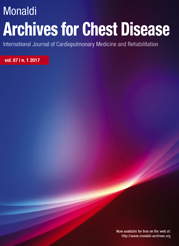Study of the clinical profile of community-acquired pneumonia: a cross-sectional study in northeast India
All claims expressed in this article are solely those of the authors and do not necessarily represent those of their affiliated organizations, or those of the publisher, the editors and the reviewers. Any product that may be evaluated in this article or claim that may be made by its manufacturer is not guaranteed or endorsed by the publisher.
Authors
Community-acquired pneumonia (CAP) continues to pose a significant public health burden in India, particularly in the northeastern region, where data on microbial etiology and resistance patterns remain scarce. This cross-sectional observational analytical study, conducted over one year at a tertiary care center in northeast India, analyzed 117 adult patients with clinico-radiologically confirmed CAP to elucidate their clinical, epidemiological, and microbiological profiles. The cohort was predominantly male (76.9%), with a mean age of 52 years, and the most affected age group was 31-40 years. Hypertension and chronic obstructive pulmonary disease were the most common comorbidities. Cough, breathlessness, and fever were the leading symptoms. Sputum cultures were positive in 42.7% of cases, with a striking predominance of gram-negative organisms (94%), especially Klebsiella pneumoniae and Pseudomonas species. Alarmingly, high resistance rates were observed for widely used antibiotics such as ceftriaxone and cefuroxime, while meropenem, amikacin, and ertapenem retained high sensitivity. These findings emphasize the critical need for tailored, region-specific empirical treatment strategies in light of emerging antibiotic resistance trends in CAP.
Ethics approval
The study was approved by the Institutional Ethics Committee (IEC) of NEIGRIHMS, Shillong as documented in the approval letter (Ref No. NEIGR/IEC/M10/T12/2020).How to Cite

This work is licensed under a Creative Commons Attribution-NonCommercial 4.0 International License.






